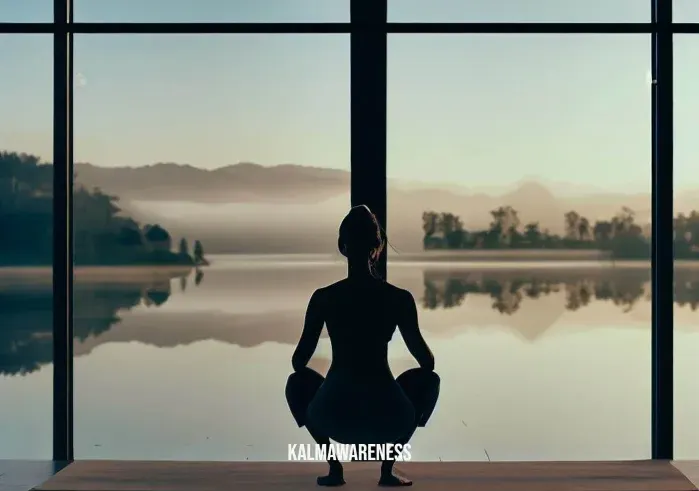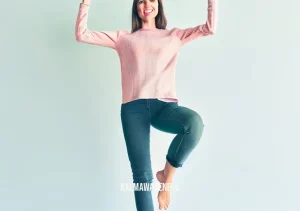The Squat Pose in Yoga
Welcome to the world of yoga, where we delve into the beauty of poses that bring balance, flexibility, and serenity to our lives. In this article, we will explore the captivating and empowering “Squat Pose,” a fundamental asana that has numerous benefits for your body and mind.
| Description | Explanation |
|---|---|
| Pose Name | Squat Pose |
| Original Name | Malasana |
| Difficulty Level | Intermediate |
| Pose Category | Standing Yoga Pose |
| Exercise Duration | Varies |
Introduction to Squat Pose in Yoga
The Squat Pose, or Malasana, is a powerful yoga posture that resembles the natural position of a squat. It may seem simple, but it offers a myriad of advantages that can improve your physical and mental well-being. The pose primarily engages your lower body and core, enhancing strength, flexibility, and balance.
Benefits of Squat Pose
- Strengthening: Squat Pose targets the muscles of the thighs, hips, and lower back, building both strength and endurance.
- Flexibility: Regular practice of this pose can improve the flexibility of your ankles, groins, and lower back.
- Digestion: The compression applied to the abdomen in this pose can aid digestion and stimulate the digestive organs.
- Hip Opener: Malasana is an excellent hip opener, which helps release tension and tightness in the hips.
- Posture Alignment: The pose promotes proper posture and helps alleviate lower back pain caused by sitting for extended periods.
Step-by-Step Guide to Squat Pose in Yoga
- Starting Position: Stand with your feet slightly wider than hip-width apart, toes pointing forward.
- Squatting Down: Bend your knees and lower your hips towards the ground. Keep your heels on the floor or use a folded blanket for support if needed.
- Hands Placement: Bring your hands to the prayer position at your heart center. Use your elbows to gently press your knees outward.
- Spine Alignment: Lengthen your spine by lifting your chest and drawing your shoulder blades together.
- Gaze: Look forward, keeping your neck in line with your spine.
- Breathing: Take deep breaths, inhaling and exhaling slowly and steadily.
- Hold the Pose: For beginners, try holding the pose for 30 seconds to a minute. As you become more comfortable, aim to hold it for up to 3 minutes.
Beginner’s Tips
- If your heels lift off the floor, place a folded blanket or a yoga block beneath them for support.
- To maintain balance, engage your core muscles and distribute your weight evenly through your feet.
Advanced Variation
For a deeper stretch and challenge, you can try the following variation:
- Bound Squat Pose: Once in the Squat Pose, bring your hands behind your back, interlace your fingers, and straighten your arms. Lift your chest and draw your shoulder blades together.
Precautions
- Avoid Squat Pose if you have knee or ankle injuries.
- Pregnant women and individuals with lower back issues should consult their healthcare provider before attempting this pose.

Dive Deeper into Squat Pose in Yoga
In this chapter, we will take a closer look at the Squat Pose, exploring its numerous benefits, understanding who can practice it safely, and discovering variations suitable for practitioners of different experience levels. Let’s delve deeper into the empowering world of this yoga pose.
Benefits of Squat Pose
- Hip and Groin Flexibility: Regular practice of Squat Pose enhances the flexibility of the hips, groins, and ankles. This increased range of motion can improve your overall mobility and posture.
- Stimulates Digestive Organs: The compression applied to the abdomen in this pose stimulates the digestive organs, aiding digestion and helping to alleviate bloating and constipation.
- Strengthens the Lower Body: Squat Pose targets the muscles of the thighs, hips, and lower back, building both strength and endurance in these areas.
- Hip Opener: This pose is an excellent hip opener, releasing tension and tightness in the hips caused by prolonged sitting or sedentary lifestyles.
- Balances the Nervous System: Malasana calms the mind and helps in balancing the nervous system, reducing stress and anxiety.
Who Should Avoid Squat Pose?
While Squat Pose offers numerous benefits, it may not be suitable for everyone. Avoid this pose if you:
- Knee or Ankle Injuries: If you have existing knee or ankle injuries, it is best to steer clear of Squat Pose, as it puts significant pressure on these joints.
- Lower Back Issues: Individuals with lower back problems should avoid this pose or perform it with caution, as it may exacerbate the condition.
- Pregnant Women: Pregnant women should avoid Squat Pose, especially during the later stages of pregnancy, as it can put strain on the pelvic area.
- Recent Surgery: If you have had recent abdominal or pelvic surgery, consult with your healthcare provider before attempting this pose.
Variations of Squat Pose in Yoga
1. Supported Squat Pose:
For beginners or individuals with limited flexibility, a supported version of Squat Pose can be practiced using props such as yoga blocks or a bolster. Place the props beneath your sit bones to provide support and make the pose more accessible.
2. Malasana Twist:
This variation adds a twist to the traditional Squat Pose. From the squatting position, place your left hand on the floor and reach your right arm upward, twisting your torso. Repeat on the other side.
3. Garland Pose (Malasana Variation):
Garland Pose is an excellent variation for those looking to deepen the stretch in their hips and groins. From Squat Pose, bring your hands to the floor in front of you, and then press your knees outward using your elbows.
4. Squat Pose Jump:
For a more dynamic practice, try the Squat Pose Jump. From the squatting position, press into your feet, engage your core, and jump up, reaching your arms overhead. Land softly back into the squat position.
5. Crow Pose (Bakasana):
For advanced practitioners looking to challenge their balance and arm strength, transition from Squat Pose to Crow Pose. Place your hands on the floor, bend your elbows, and shift your weight forward, lifting your feet off the ground.
Preparing for Squat Pose
Before attempting Squat Pose, warm up your body with gentle stretches and dynamic movements. Focus on opening the hips and stretching the thighs and groins. It’s essential to listen to your body and honor its limits.

Unveiling the Mystique of Squat Pose in Yoga
In this chapter, we delve into the intriguing history of the Squat Pose, uncover its spiritual significance, and offer valuable tips to maximize its benefits. We will also explore common mistakes to avoid and provide modifications for those with injuries or limited flexibility. Additionally, we’ll discover complementary poses that harmonize with this empowering yoga asana.
The History of Squat Pose
The Squat Pose, or Malasana, has ancient roots in yoga and is believed to have originated in India, the birthplace of this transformative practice. Historically, squatting was a common position for various activities, including eating, resting, and meditation. Over time, this natural posture became a fundamental asana in traditional yoga practice.
The Spiritual Significance of Squat Pose
Beyond its physical benefits, Squat Pose holds spiritual significance. As you lower yourself into this grounding posture, you connect with the earth and root your energy to the present moment. The squatting position symbolizes humility and surrender, reflecting the essence of yoga—union of body, mind, and spirit.
Tips for Getting the Most Out of Squat Pose
- Use Props: If you find it challenging to keep your heels on the floor, place a folded blanket or yoga block under your heels for support.
- Gentle Press: As you squat, use your elbows to gently press your knees outward. This action helps open the hips and groin.
- Relaxed Shoulders: Keep your shoulders relaxed and away from your ears to maintain an open chest and promote a sense of ease in the pose.
- Breathing: Focus on slow, deep breathing as you hold the pose, allowing your breath to calm your mind and deepen the stretch.
Common Mistakes to Avoid
- Rounded Back: Avoid rounding your back during Squat Pose, as it can strain the lower back. Keep your spine straight and engage your core for stability.
- Knees Over Toes: Be mindful not to let your knees extend past your toes; this can place excess pressure on the knee joints.
- Tension in Shoulders: Avoid tensing your shoulders; instead, draw them away from your ears to maintain a relaxed upper body.
Modifications for Injuries or Limited Flexibility
- Chair Squat Pose: If you have knee or ankle issues, try Chair Squat Pose. Stand with your feet hip-width apart and lower yourself as if sitting in an imaginary chair.
- Wall Squat Pose: For support during Squat Pose, stand with your back against a wall, and lower yourself into the squatting position.
- Bolster Support: If you have limited flexibility in your hips, use a bolster or cushion under your sit bones for added support and comfort.
Complementary Poses
- Forward Fold (Uttanasana): Forward Fold complements Squat Pose by providing a deep stretch to the hamstrings and lower back.
- Pigeon Pose (Eka Pada Rajakapotasana): Pigeon Pose opens the hips and prepares them for the depth of Squat Pose.
- Child’s Pose (Balasana): Child’s Pose is an excellent counterpose to Squat Pose, providing a gentle stretch to the back and hips.
Thoughts
As you explore the magic of Squat Pose, embrace its rich history and spiritual significance. Through mindful practice, you’ll cultivate a deeper connection with your body, mind, and the present moment. Remember that yoga is a personal journey, and the true essence of each pose lies not in perfection but in the profound exploration of self.
In the final part of this article, we’ll venture into the world of mindfulness, drawing our yoga practice to a harmonious close. Get ready to elevate your consciousness and embrace the transformative power of yoga




